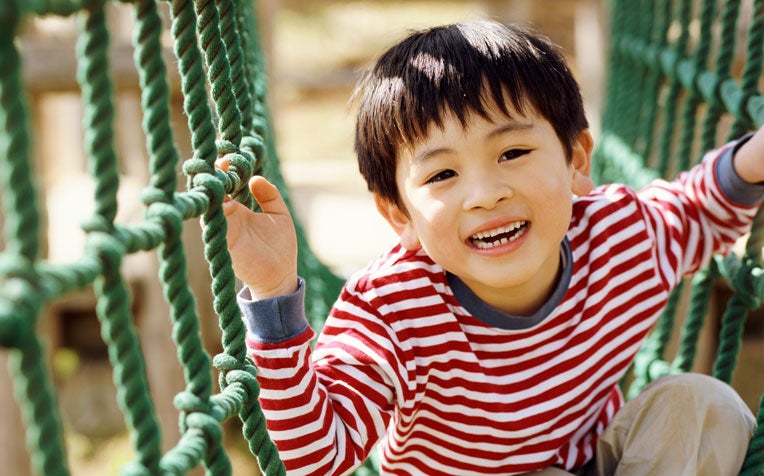
Exercise Tips for parents to keep children safe during exercise.
Recommended physical activities for children aged 6 – 9 years
While children at this age should continue to participate in unstructured play and build on their fundamental movement skills, they should also be introduced to entry-level sports. The focus should be on learning the sport in a fun manner.
“Participation in entry-level structured sports should provide a platform for continued learning and improvement in overall motor skills,” says Mr Micheal Lim, Head and Senior Clinical Exercise Physiologist, Sports Medicine Programme, KK Women’s and Children’s Hospital (KKH), a member of the SingHealth group. “Children at this age can be involved in running, jumping and sliding while they develop skills like agility, balance and coordination from sports.”
Recommended physical activities for late childhood / early adolescence (10 years and up)
At this age, children should continue to develop their fundamental movement skills and learn more complex sports skills. They can be introduced to competitive sports and taught the basic rules of sport competition, e.g. enjoying the game, fair play, simple strategies and tactics. They can also be introduced to the concept of sports training and exercises that build the following skills:
- Endurance – aerobic / cardiovascular exercises like running, swimming, cycling
- Strength – resistance exercises
- Agility, coordination and balance – speed work, rapid movement exercises
How to ensure the right type and amount of exercise for your child?
Children need a healthy amount of exercise for their growth and development. However, an excess can cause injury, reduce enjoyment in the activity and lead to burnout.
“There are sequential stages for exercise and sports introduction for children,” says Mr Lim. “These should be followed keeping the needs and the best interests of the child in mind.”
Parents should understand their children’s needs and respect their physical, mental and social development. Below are some exercise safety tips that parents can observe.
Physical development
- The intensity, frequency and duration of physical activity should be based on the child’s individual learning ability, skill and fitness level.
- Children should be educated on proper training techniques, as well as on the importance of warm-up, cool-down and flexibility exercises to prevent injuries.
Mental development
- The physical activity should be enjoyable and the focus should be on learning a broad range of motor skills.
- Specialising in a single sport and starting intensive and year-round training too early can result in overuse injuries, mental stress and burnout.
- Children should have some time off from the physical activity to allow their body and mind to rest.
- A child’s physical and psychological well-being during participation in sports/physical training should be monitored regularly.
“Time-off will ensure that children do not get stressed out, over-train or push themselves to the limit,” says Mr Lim. “Children should be encouraged to engage in 2-3 different sports, instead of just one.”
Social development
- Children should be taught the appropriate social behaviours, such as cooperation, required for participation in individual and team sports.
- Physical activities should promote a child’s self-esteem and social development.
“Children look up to parents and watch their lifestyle habits. As a parent you should be a role model for your children when it comes to exercise and sports,” says Mr Lim.
Ref: S13

















 Get it on Google Play
Get it on Google Play